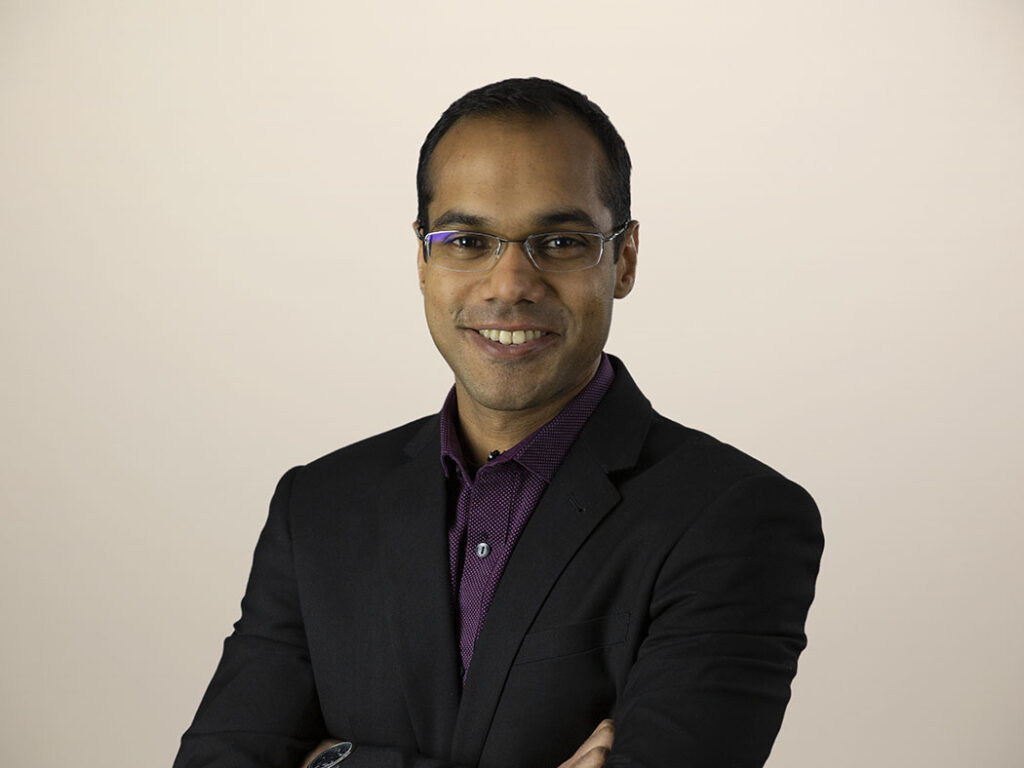FORR The Planet: Sustainability Interview Series — Hallmark

Photo by Abhinav Sunil
Complex organizations need to implement sustainability initiatives that cut across multiple businesses. To look deeper at one such organization with diverse businesses, we interviewed Kristin Edie, vice president of enterprise sustainability at Hallmark, about her leadership role and the most impactful sustainability efforts at Hallmark across Hallmark Media, Crayola, and Hallmark Cards.
Role And Responsibilities
Abhijit Sunil: Please tell us more about your role as the leader for sustainability at Hallmark and your internal organization.
Kristin Edie: I am the vice president of enterprise sustainability. Hallmark has a portfolio of businesses, including Hallmark, Crayola, Hallmark Media, and Crown Center. I work at the enterprise level to set the environmental strategy, goals, and targets. In addition, if there are initiatives that cross multiple businesses, my team will take the lead to implement them. One example is our supplier engagement program, which includes suppliers of many of our global businesses and brands.
In addition to my team working across the enterprise, we have additional sustainability teams in the individual businesses. While these teams do not directly report to me, we partner together daily to deliver the strategy. This team structure allows us to embed ownership for sustainability within the individual businesses. We feel that embedding business ownership is important because reaching our goals may require different actions in each business. For example, one focus area of our strategy is our product and content pillar, which involves redesigning physical products and packaging for Hallmark and Crayola. Yet at Hallmark Media, this same goal means measuring the carbon footprint of movie production to identify the key emissions drivers. Each business may have some customized ways of making our strategies come to life, but we always collaborate across the businesses to share ideas and best practices.
Most Impactful Sustainability Efforts
Abhijit: What are the most impactful sustainability efforts that you’ve undertaken within Hallmark?
Kristin: In 2022, we had our 2030 enterprise science-based target approved for greenhouse gas emissions reduction. There are four key pillars of work to deliver this target.
The first pillar is products and content, which includes redesigning products and packaging to make them more sustainable and reduce their carbon footprint. We are also working to increase the sustainability of movie production at Hallmark Media.
The second pillar is renewable energy. Our goal is to transition to renewable electricity across our global facilities. We are also asking our key suppliers to implement renewable electricity and energy efficiency projects to do their part in reducing emissions across our supply chain.
The third pillar is sustainable forestry. We know that forests are a very important sustainability consideration, and we have had a commitment to responsible sourcing of paper and wood for many years. When we launched our updated strategy, we did not want to lose focus on this area, so we brought this priority into our new action plan.
And then fourth is transportation. Our goal is to reduce emissions from transporting our products, as well as those from our employees commuting to the office and our business travel.
We have been making great progress toward our renewable energy priorities. This has been a meaningful journey, since the concept of renewable energy goes back into our history. I recently visited our first Crayola factory, which began operation back in 1900 in Pennsylvania, where Crayola still operates today. Manufacturing operations at that first Crayola factory were powered by a waterwheel from the nearby creek. Since Crayola has always had this link to the power of nature when it came to manufacturing, we continue that passion for renewable energy today. For example, in 2010, Crayola built a solar farm to help power the manufacturing plant. Then in 2020, Crayola transitioned to 100% renewable electricity in all the US-owned facilities.
Many leaders at Hallmark bring the same passion for renewable energy to the Hallmark brand. The Hallmark brand began its renewable electricity journey in 2021 within our distribution facilities. We recently began purchasing renewable electricity, such as solar and wind, for our Hallmark-owned facilities and offices globally. We have also submitted plans to build a solar farm at our greetings manufacturing plant in Kansas.
From an impact point of view, these renewable electricity projects have done a lot to reduce our scope 1 and scope 2 emissions. But moreover, it has been a way to build a culture of sustainability within our company — to show our commitment to sustainability to our employees, customers, suppliers, and visitors.
Supply Chain Decarbonization
Abhijit: You mentioned supply chain being a big part of your decarbonization strategy. I’m assuming that with Crayola, Hallmark, and even in movie production, supply chain is a big part of decarbonization efforts. How do you address various efforts within the supply chain, and what has been the most challenging and the most impactful efforts you’ve taken so far?
Kristin: As you mentioned, our supply chain is an important area of focus for us. Hallmark and Crayola have our own manufacturing operations in the United States, in which we use renewable electricity. These operations fall within our scope 1 and 2 emissions, but we also have an external supply chain for raw materials and some finished products, which is part of our scope 3 emissions.
In October 2022, we launched a supplier engagement program, the CARE program, to ask suppliers to join us in this journey by reducing their environmental impact. As part of this program, we are asking suppliers to measure their greenhouse gas footprints and set emission reduction targets. We are also encouraging suppliers to take actions such as implementing energy efficiency projects and transitioning to renewable electricity in their factories. The actions taken by our suppliers are important because their factories are part of our greenhouse gas footprint. We, in turn, are part of our customers’ footprints. This is why we all must take collective action.
In addition, at least one of our suppliers has taken the initiative to implement the same type of program with their own suppliers. This is very valuable, because our supply chain emissions come from not just our direct suppliers’ factories but also from our suppliers’ suppliers.
Abhijit: What are the biggest challenges in working with these suppliers?
Kristin: A big challenge is providing education. When we started, many suppliers had not measured their greenhouse gas footprint and were only starting to learn about renewable energy. Every year, we need to ask our suppliers to provide us with emission-related data to track our progress. The challenging part is reaching out to our suppliers to gather data every year and, for them, having the knowledge necessary to provide that data. We periodically hold meetings with suppliers to educate them about our CARE program, why we are implementing it, and how we track our progress on improving the sustainability of our supply chain with the data they provide. Every year, we and our suppliers are becoming more knowledgeable, but this is a continual learning process for everyone.
Sustainability Regulations
Abhijit: What regulatory aspects are key for you at Hallmark? What reporting frameworks are you planning to report into, and considering that you are a private company, how do you see regulations such as the EU’s Corporate Sustainability Reporting Directive and the SEC’s proposal affecting your strategy?
Kristin: As a private company, some regulations targeted toward public companies and their investors do not apply to us. But globally, some regulations being implemented do include large private companies. For example, recently, California and the European Union have both launched legislation related to emission reporting and climate risk assessments that include large private companies in their scope. It is important that all companies monitor the fast-moving global legislation at all levels (country, state, local) to ensure that they are compliant with regulations that apply to their business. It is important to have strong rigor around these processes and reporting.
In addition, there are increasing legislative requirements for third-party verification audits of greenhouse gas footprints. As a result, the rigor around sustainability reporting is getting elevated to become closer to financial reporting. These audits ensure that companies are compliant with the Greenhouse Gas Protocol and that their processes and data are credible. With the increased legislative focus on performing climate risk assessments, such as the TCFD [Task Force on Climate-Related Financial Disclosures], in businesses, the partnership of sustainability with finance and risk management is becoming more important. This allows companies to analyze and determine their biggest financial risks because of the changing climate.
In general, when legislation starts to require certain actions such as audits or risk assessments, this can create a new industry standard. Therefore, even if legislation does not apply to all companies, it is still advisable for companies to monitor evolving best practices.
Integration Of Sustainability Into Products
Abhijit: How do you integrate sustainability into various Hallmark products? How do you infuse sustainability-related metrics and expertise into various product lines?
Kristin: Right now, our primary focus for product sustainability is on increasing the recyclability of products and packaging, using more sustainable materials such as recycled content, and reducing the quantity of raw materials used per product. All of these are key levers to reduce the environmental impact of our products and packaging by reducing their carbon footprint and increasing circularity.
We also have software to do product lifecycle assessments. We use this software to compare the emissions of a product or packaging solution before and after the proposed redesign. Product sustainability to reduce greenhouse gas emissions is an area where we are learning and growing every day.
Abhijit: Thank you, Kristin, for your valuable time and insights!
Kristin: Thank you!
